Contents
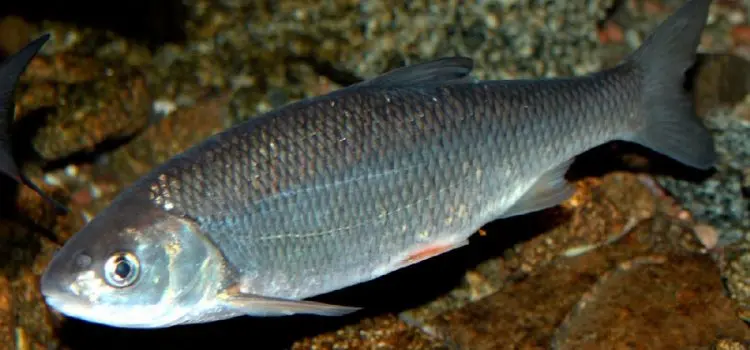
Asp is also known under other names, such as sheresper, asp, whiteness, etc. This predator is a prominent representative of the cyprinid family, the genus “asp” and the order of cyprinids. As a rule, representatives of the carp family are more peaceful fish, but asp is a classic predatory fish.
Asp fish: description
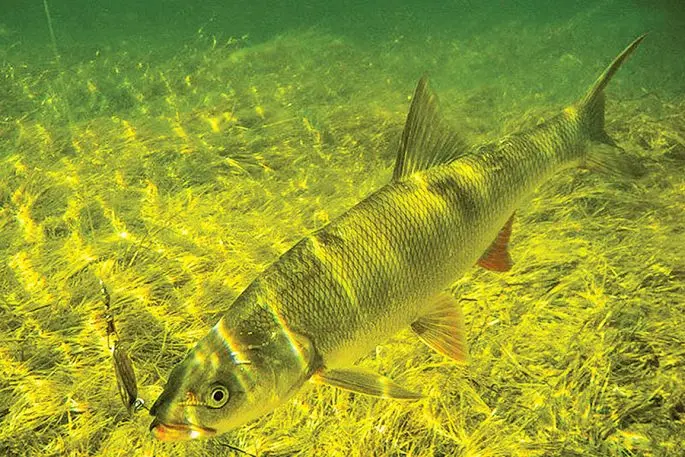
Experts distinguish three predatory subspecies of asps. For example:
- Asp ordinary or European, which lives on the European continent.
- Asp red-lipped, which is found in the reservoirs of the Middle and South Caspian.
- Aral asp inhabiting the Syr Darya and Amu Darya rivers.
Asp differs in that this predator does not have a stomach, and instead of it, a straight tube with a void inside goes from the mouth to the tail itself. Therefore, food immediately enters the intestinal tract, where it is digested much faster.
This structure of the internal organs is associated with rapid metabolic processes. Therefore, asp eats constantly, and fast metabolic processes allow you to quickly gain weight. This predator feeds not only on small fish, but also on other food objects of animal origin.
Appearance
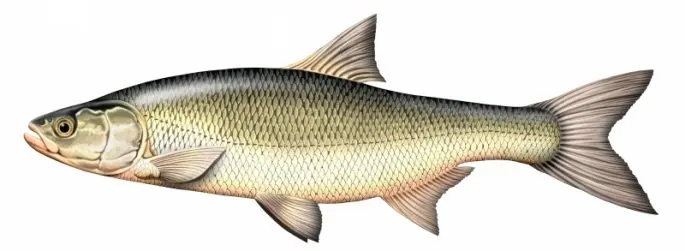
Asp can be easily distinguished from other fish species by its dark grayish-bluish back, silvery-grayish flanks and white belly. The dorsal and caudal fins are colored gray, while the tips of the fins are dark, as if with a border. The lower part of the caudal fin is longer than the upper, although slightly.
The remaining fins are distinguished by a reddish tint at the base and grayish towards the end. The eyes of the asp have a characteristic yellowish tint. The body is broad, and the back region is characterized as broad and powerful. The body is covered with large and thick scales. The asp is able to jump high out of the water, while spreading its fins to the sides.
The head of this predator is somewhat elongated, and the lower jaw is noticeably longer than the upper and, as it were, directed upwards. Asp can grow up to 1,2 meters in length, while gaining a weight of about 12,5 kg. With a weight of about 2 kg and a length of 0,6 meters, the fish becomes sexually mature, which happens somewhere around the 3rd year of life. There are no teeth on the jaws of the predator, but there are peculiar tubercles and notches, which allows the predator to grab and hold its prey securely.
Interesting to know! A common distinguishing feature of all cyprinids is the fleshy lips and the absence of teeth on the jaws, although the asp does not have a large number of sharp teeth in the throat.
Despite this, the asp is able to hold and capture even large prey, although it mainly hunts fish fry. At the same time, he first suppresses the trifle (immobilizes) and only then swallows it. This method of obtaining food does not require much effort and energy.
Trophy fishing for asp!
Behavior and lifestyle
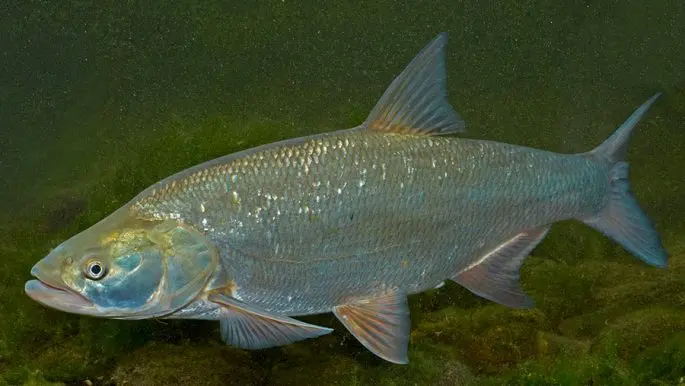
Representatives of this class of fish inhabit flat rivers with a moderate, but not fast flow. At the same time, asp cannot be found in reservoirs with stagnant water, where there is a lack of oxygen. As a rule, for its hunting, a predator chooses areas of the water area behind rifts or the mouths of small rivers that flow into larger rivers. The asp prefers to stay close to the upper layers of the water. Basically, the fish leads an isolated lifestyle and gathers in small groups either before wintering or before spawning.
The predator is unique in that it has an original way of obtaining food. The asp approaches a flock of fish and stuns the fry with a blow of a strong tail against the water. After that, he swallows the fish whole. Each adult has its own territory in which the predator hunts. Therefore, he constantly moves around the reservoir along the same route, but this does not mean at all that the asp is easy to catch if you calculate its route.
Asp begins to behave quite actively with the advent of real heat. During this period, fish can unite in flocks and hunt in large numbers. As a rule, this happens in the spring, after wintering. Asp leaves in the same numerous flocks for wintering pits.
Interesting to know! When an asp is hunting, it can be heard at a considerable distance. Anglers say that the fish arrange “fights”. Despite this, the asp manages to get food for itself very effectively.
By the “battle” of the asp, you can easily calculate its location. Of course, catching it is not so easy, but for experienced anglers it is a chance. This predator has excellent eyesight and sees everything that happens on the shore. If he notices even the slightest sign of danger, he is unlikely to take the bait.
With the advent of autumn, the asp moves to areas with considerable depth and practically does not fit the coastline. Despite this, it is the autumn period that is considered the most favorable in terms of hunting for asp. This is due to the fact that in autumn the fish begin to store nutrients for the winter, and become less cautious.
Lifespan
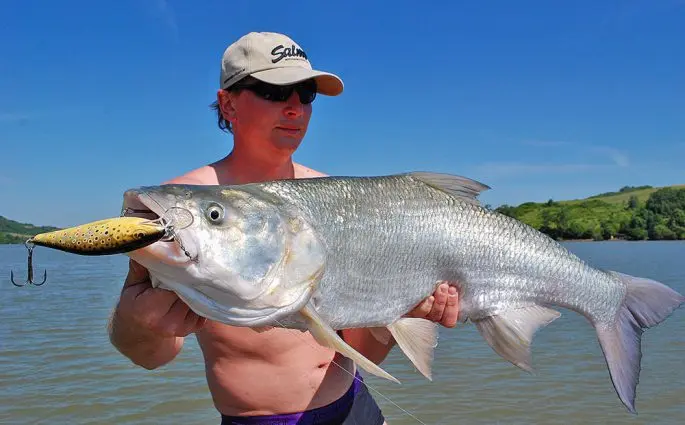
Life expectancy depends on the variety of asp. It is believed that on average this predator lives about 10 years. For example, the flat-headed asp can live for about 9 years, and the Western Asian – about 7 years. Nowadays, they do not have time to live up to such years, since many anglers hunt for asp and use the most advanced fishing gear for this.
Range, habitats
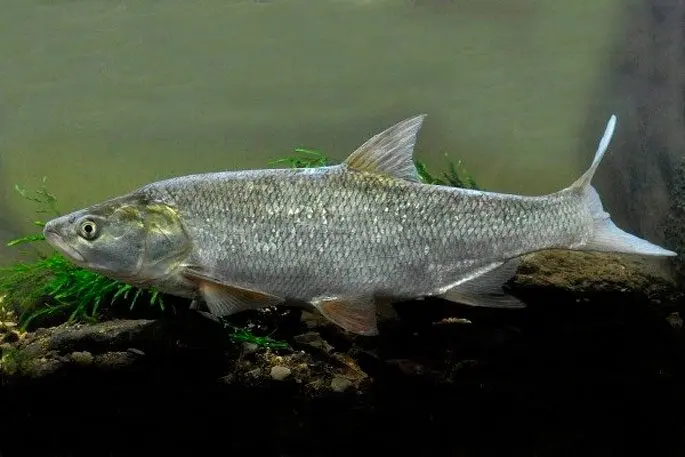
For the normal life of this predator, special living conditions are necessary, which today are limited to natural reservoirs that are not large, as well as reservoirs in which water is polluted. Asp is a fairly large predatory fish that needs spacious and deep water areas with clean running water, rich in oxygen and rich in food.
In the natural environment, the habitat of asp is represented by large rivers and lakes, as well as reservoirs of the North, South and Baltic Seas.
The habitat of this predator is insignificant compared to other fish species and is limited to the territory of Eastern Europe and some part of Western Europe. It is possible to draw a conditional line that connects part of the Eurasian continent and the Ural and Rhine rivers. The southern border of this conditional line falls on the territory of Central Asia, including part of Kazakhstan, as well as the Caspian and Aral basins. This should also include the Amudarya and Syrdarya rivers flowing through the territory of Uzbekistan.
Interesting fact! Not large populations of this predator are found in Lake Balkhash. Predatory fish were artificially populated in this reservoir, but asp is not found in the reservoirs of the North Caucasus, Siberia and the Far East.
In the north, the habitat of the asp is limited to the Svir River, which flows into both Ladoga and Onega Lakes, as well as the Neva River and its water area, which flows into the Baltic Sea.
What feeds on
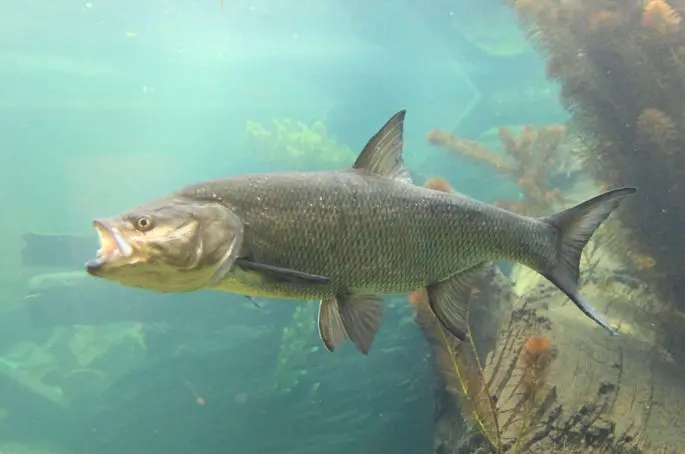
Asp belongs to the category of pelagic ichthyophages, as indicated by the structure of the mouth and body of this predator, in addition, the predator adheres to the middle and upper layers of water. At a young age, the predator’s diet consists of insects and worms, as well as small crustaceans and other small objects of animal origin.
When individuals grow up to 30 cm in length, they become classic predators and prey on fry of bream and roach. During this period, the asp still continues to feed on worms and other objects of animal origin of small size.
When the asp switches completely to feeding on fish, it does not particularly go over and preys on fry of any kind of fish, including weedy ones, such as bleak, gudgeon, etc. The diet of asp also includes sprat, chub, silver bream, etc. At the same time, the asp also preys on larger fish, although its size is limited by the size of its mouth. Older individuals are able to swallow fish up to 15 cm long.
Interesting to know! Asp is a predatory fish, which, compared to other types of predatory fish, itself is looking for potential prey, chasing schools of fry. Moreover, such behavior for asp is typical even for a young age.
When inclement weather sets in, with heavy rains and gusty winds, this predator goes to the depths. At the same time, it occasionally rises to the surface of the water, where it finds various insects caught in the water. In any case, this predator needs food. The more full-flowing the river and the more food it contains, the more trophy, fattened specimens are found. Naturally, in small rivers there is not enough food for asp, so it grows slowly and does not have time to reach an impressive size.
Best biting period

Immediately after spawning (actively feeds all day).
Asp Catching on a Swing Seats and Lines #OnlySpin
Breeding process
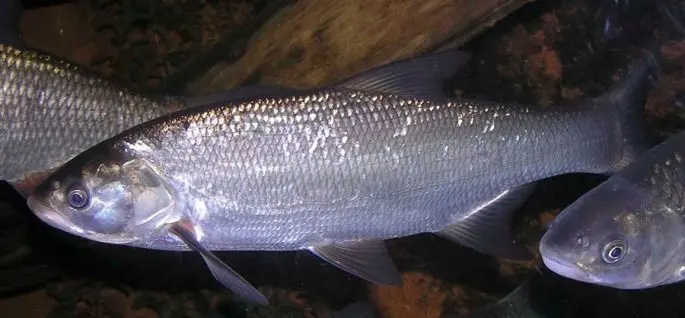
Somewhere in the 3rd year of life, young individuals become sexually mature. At the same time, the weight of average specimens reaches one and a half kilograms. Predators inhabiting colder regions become sexually mature about 1 year later.
The spawning process begins when conditions are optimal, and this directly depends on weather conditions. Predators inhabiting the reservoirs of the southern regions go to spawn in mid-April. In this case, spawning lasts about 2 weeks. During this period, the water warms up to a temperature of 7-16 degrees. Asp spawns in pairs, and there may be several pairs in one area, which creates the illusion of group spawning.
Interesting fact! Before the process of spawning, males arrange fights for the right to fertilize eggs. Fights are not so harmless as predators can seriously injure each other.
Asp is no different in that it goes in search of special places for spawning. It spawns in that part of the water area where it hunts. The main condition is a sandy-pebble bottom or a rocky rift. If the spawning conditions of the asp are not satisfactory, then it can go upstream to find a suitable place.
Each female lays from 50 to 100 thousand eggs, which stick to the roots and stems of plants that have died in winter. The eggs are distinguished by the fact that they are securely held on the base. Somewhere in 2 weeks, under favorable conditions, asp fry appear from the eggs. Under adverse conditions, the process of maturation of eggs can be delayed for a week or a little more.
Natural enemies
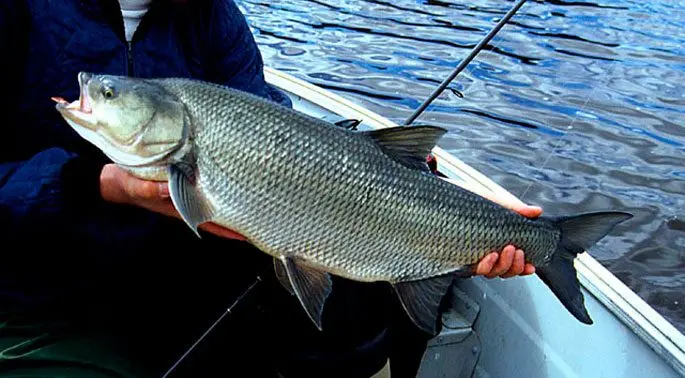
Asp is a rather cautious fish with excellent eyesight. At the same time, his sense organs are highly developed, so he is able to control his living space even in the process of hunting for fry. Because of this, many predators simply do not have time to get close, let alone attack the asp. The same is true for humans. To catch an asp, you need to carefully disguise yourself on the shore, then there is at least some chance to catch this predator.
Naturally, at a young age, asp becomes an object of food for many predatory fish, as well as for waterfowl, including gulls and cormorants.
When the asp managed to reach maturity, it has practically no natural enemies, with the exception of eagles and ospreys. These birds of prey are able to track down the asp from a great height, after which they dive and snatch their prey from the water.
Fishing value
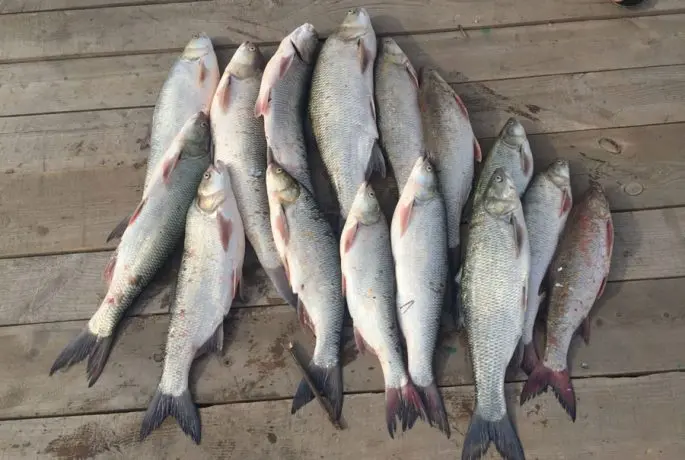
In addition to the fact that the asp is a cautious and shy fish, when it hits the hook, it is able to resist very actively. In this regard, asp is of great interest for sports and amateur fishing, both in our country and abroad. This fish is especially interesting for spinners who get a lot of pleasure from playing a predator.
It is important to know! Asp is a fairly valuable commercial fish, although its annual catch is only 0,1% of the total mass of fish caught. The asp has tasty and tender meat, besides, the fish quickly gains commercial weight.
Semi-anadromous varieties of asp are of particular commercial importance. Despite the excellent taste, the meat of the asp is quite bony, so it is more suitable for drying or smoking. Asp balyk, in terms of its taste, is not much different from balyk made from highly valuable fish species, such as salmon, for example.
Population and species status
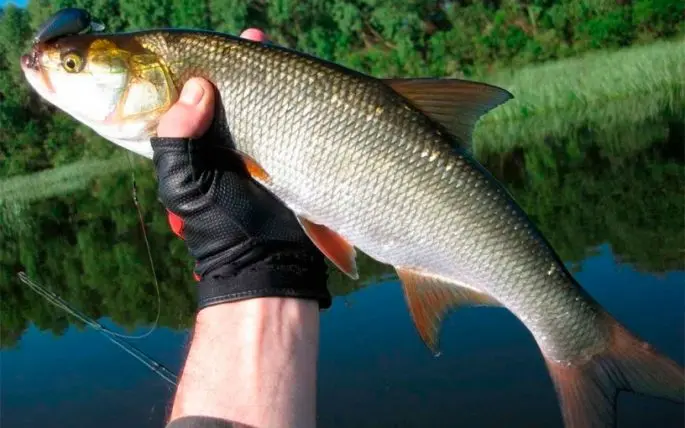
Not large populations of asp, as well as a decrease in its numbers, is due to the fact that a large number of immature individuals are caught, which are caught in the nets of fishermen along with other types of fish.
The Western Asian asp belongs to the subspecies of the common asp, which is also a representative of the carp family. This subspecies is considered small, so it has already been listed in the international Red Book. The main number of this subspecies is located in the Tigris River basin, which is on the territory of Iraq and Syria.
In limited quantities, this predator is found in Karelia, where the northern border of the habitat of this fish passes. Here the fish is also listed in the Red Book. Predator captures do occur in this region, although they are very rare.
Various adverse factors should also include the factor of environmental pollution, including water bodies. In this regard, the issue of artificial breeding of asp, which is of commercial importance, is already being considered.
In conclusion
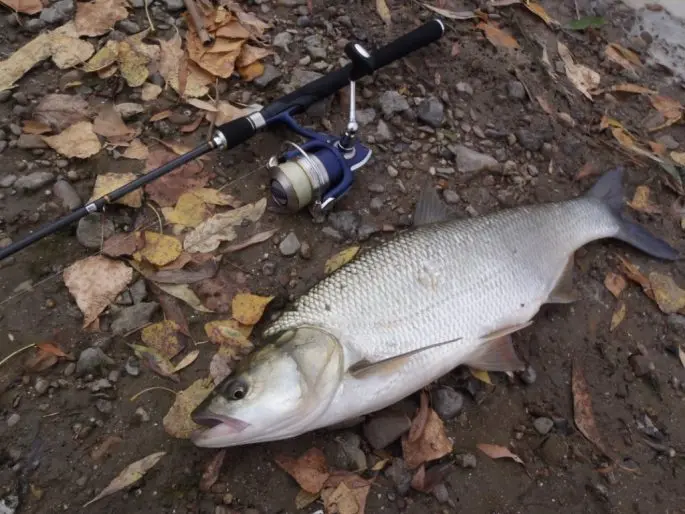
Nowadays, many species of fish are listed in the Red Book and have the same status as the asp. This is evidence of how irresponsibly man treats nature. When talking about the natural enemies of fish, it is first of all worth mentioning a person who does not think about the future at all. So you can be left without fish at all, but its absence, as a food object for humans, threatens with very serious problems. Fish meat is different in that it is primarily a dietary product with a set of all necessary components, such as vitamins and minerals. Without a constant replenishment of nutrients for a person, many ailments associated with the work of the cardiovascular system, bone tissue, skin, central nervous system, etc. await. In other words, a person simply will not survive.
Anglers catch asp with various gear, but mostly they use spinning and artificial lures. Nowadays, the shelves of specialized stores are simply bursting with an assortment of baits, as well as other accessories. Now it’s not a problem to pick up a good rod and catchy lure, if there was money. In addition to spinning, asp is also caught with a regular bait, but you need to use live bait as bait. Not a big fish will go, since the main diet of a predator consists of fish fry.
To catch this predator, you will have to try, because he has excellent eyesight and he easily determines where the live fish is and where the artificial bait is. Therefore, now you can find baits in retail outlets that are almost impossible to distinguish from a live fish in appearance. Armed with a good spinning rod and catchy bait, you also need to take care that the asp cannot notice the angler on the shore. To do this, you can use a camouflage uniform and behave in such a way as not to create noise on the shore. At the slightest danger, the fish will not take any bait, even if you throw it right under the nose of a predator.
It is not difficult to determine the ways of moving a predator, if you pay attention to the characteristic “blows” on the surface of the water. As a rule, each individual has its own territory and its own route of movement. A good effect can be obtained if you make an accurate cast to the place where the predator has just made a “hit” on the water. When he picks up and swallows an immobilized fish, there is a chance that he will accidentally swallow the bait as well. When he gets hooked, he begins to actively resist, so the tackle must be strong and reliable, while the physical data of the angler will not interfere.
Asp on Pilker from the first cast! Caught a lure









